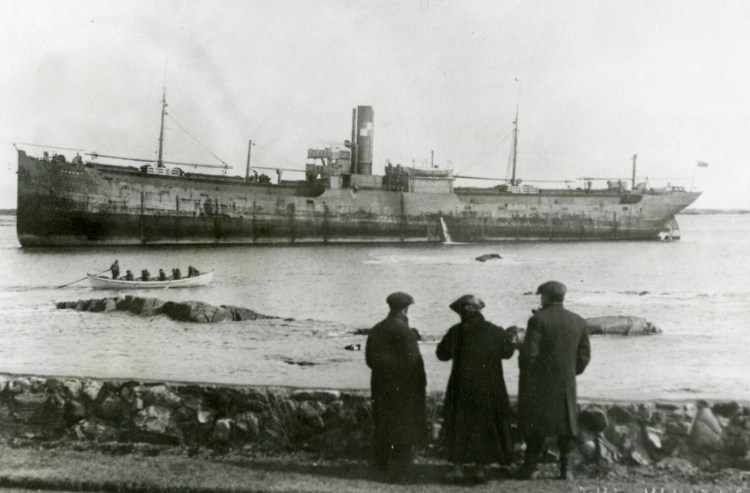March 9, 1921: The British tramp steamer Wandby becomes shipwrecked when it runs aground on rocks at Walker’s Point ledge in Kennebunkport in dense fog.

The accident happens that morning because the ship’s captain, David Simpson, mistakes a whistling buoy off Cape Porpoise for a buoy on Cashes Ledge, southeast of the Portland Lightship, which marks the approach to Portland Harbor. When a lookout reports seeing breakers, the captain gives the engine room a “full astern” order to stop the ship.
The order comes too late. The 3,991-ton freighter grinds onto the rocks, thumping and scraping so loudly that it can be heard for miles around.
When the fog lifts around 3 p.m., the crew can see that a large crowd has gathered on the beach to watch the spectacle. School is canceled in Kennebunkport so children can look at the wreck. When the tide recedes, the crew sees that rocks have penetrated 3 feet into the hull and caused a crack that extends 30 or 40 feet toward the bow. Then the tide comes back in and floods the engine room, rendering any effort to refloat the ship pointless.
Although most of the ship is broken up for salvage, some parts remain on the ocean floor to this day.
William D. Gilbertson, the assistant engineer on watch in the engine room, gives a blow-by-blow account of the wreck 36 years after the event in letters to the Kennebunk Star, a local newspaper.
The wreck occurs as future President George H.W. Bush’s Walker ancestors already have owned their family estate at Walker’s Point for a few decades, and less than five months before Bush’s parents marry in Kennebunkport. The only land-based eyewitness to the accident is William Goodwin, winter caretaker of the Walker estate.
Joseph Owen is a retired copy desk chief of the Morning Sentinel and Kennebec Journal and board member of the Kennebec Historical Society. He can be contacted at: jowen@mainetoday.com.
Send questions/comments to the editors.


